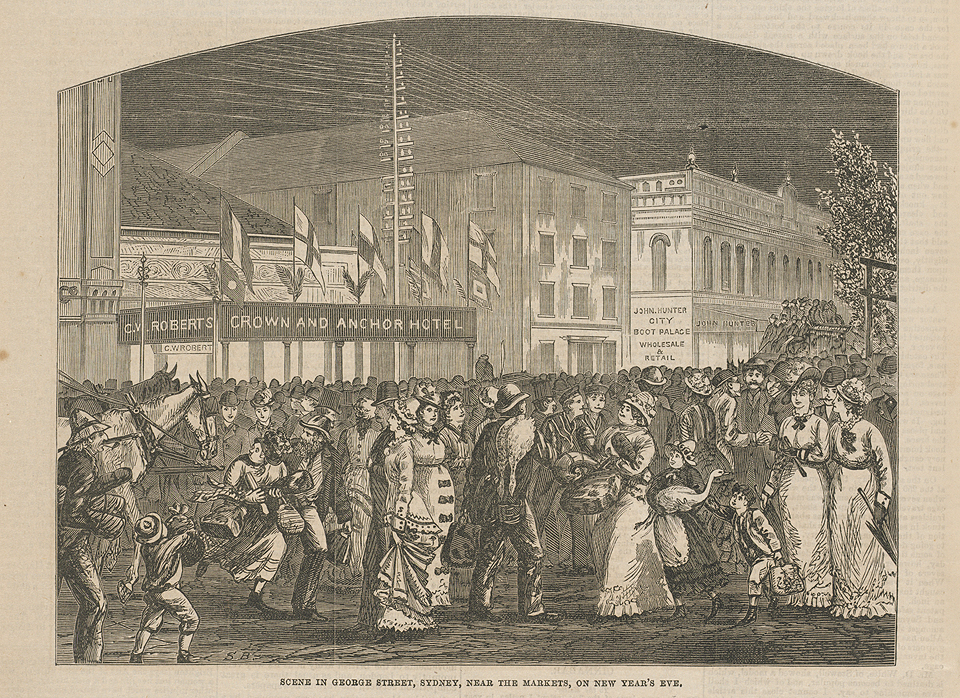The Dictionary of Sydney was archived in 2021.
Art for art's sake

From water to ice

Party like it's 1899
Sydneysiders love a party. Especially in summer. In recent years, New Year's Eve has become a huge celebration, complete with a theme, massive fireworks, music, and even an iPhone App. But this is not new. Hannah Forsyth's article, newly published in the Dictionary, shows how people have been celebrating the New Year for many decades, from New Year's Day celebrations in the nineteenth century, to the nocturnal revels which were enabled by reliable, bright lighting in the streets.

For much of the twentieth century, the focus of New Year's Eve was Kings Cross, with ongoing conflict between revellers and police trying to maintain decorum. It wasn't until the fireworks shifted the public gaze to the harbour that Kings Cross quietened down on 31 December. Have a great night, and stay safe.
The Yanks are coming

Walking a tightrope

Shop until you drop
The Trials of Thomas Muir

The Dictionary of Sydney relies on support from donors and partners - it couldn't happen without you!
Make a tax deductible donation online, or send a cheque today. You can also find out more about the Dictionary and who runs it here, or take a guided tour.



Make a donation to the Dictionary of Sydney
The Dictionary of Sydney relies on support from donors and partners. Make a tax deductible donation online, or send a cheque today. Find out more about the Dictionary and who runs it here, or take a guided tour.

Summer reading

- Sydney’s whaling fleet
- Sydney’s first ice
- Women of Pitt Street 1858
- New Year’s Eve
- Tugboats
- Northmead quarries
- Karitane
- Radar
- Water

- George de Cairos-Rego
- Iris de Cairos-Rego
- Varney Monk (also known as Varney Desmond)
- Cyril Monk
- Ernest Truman



